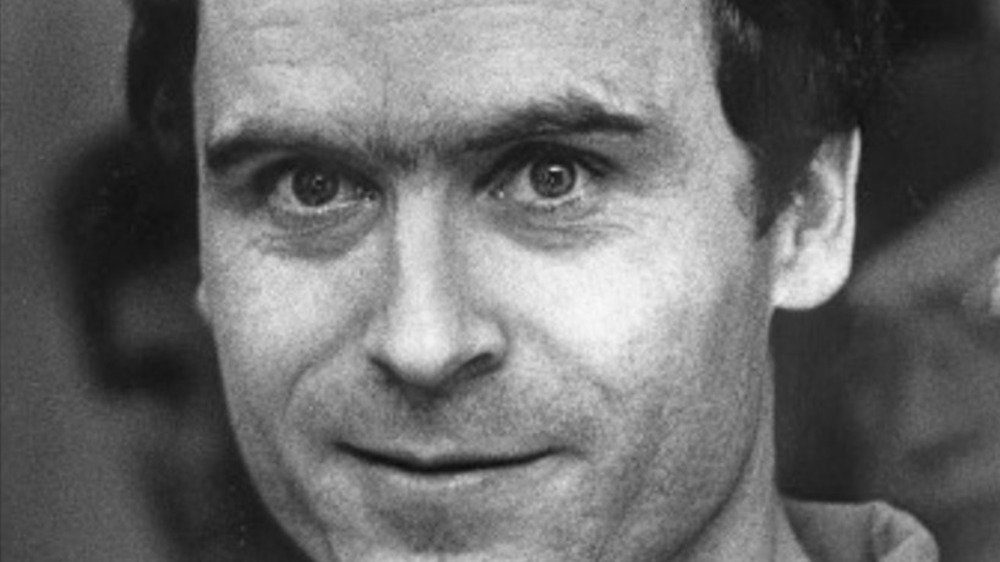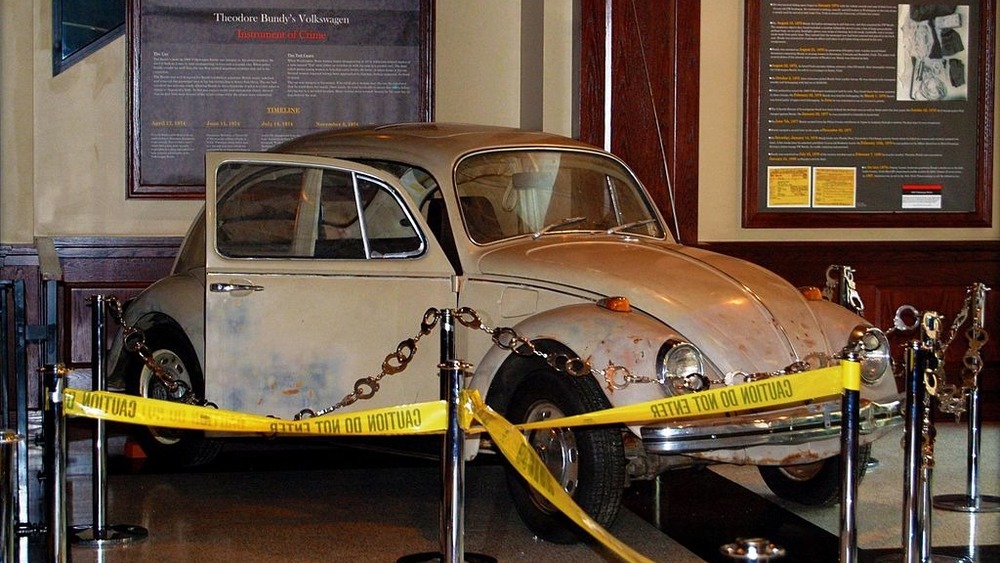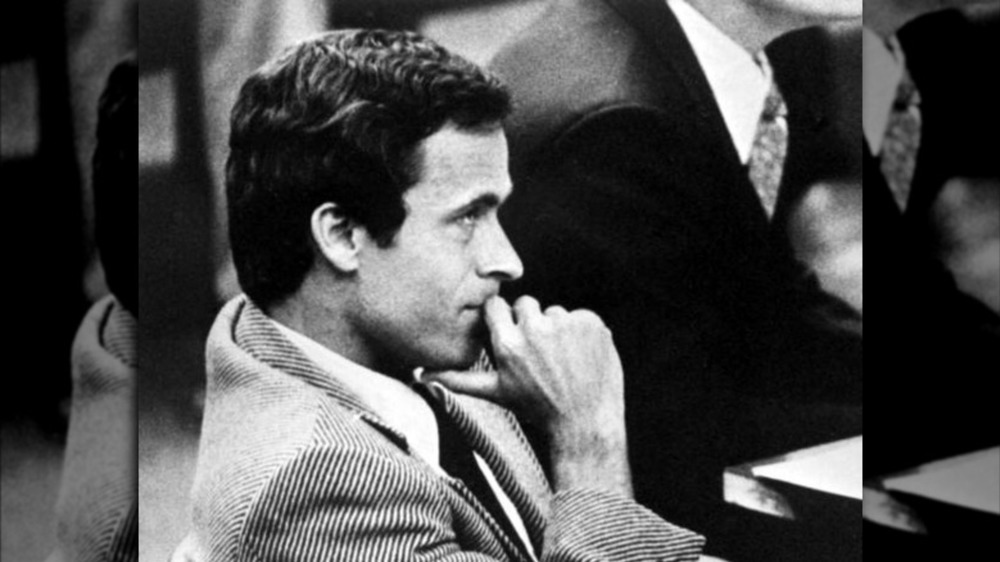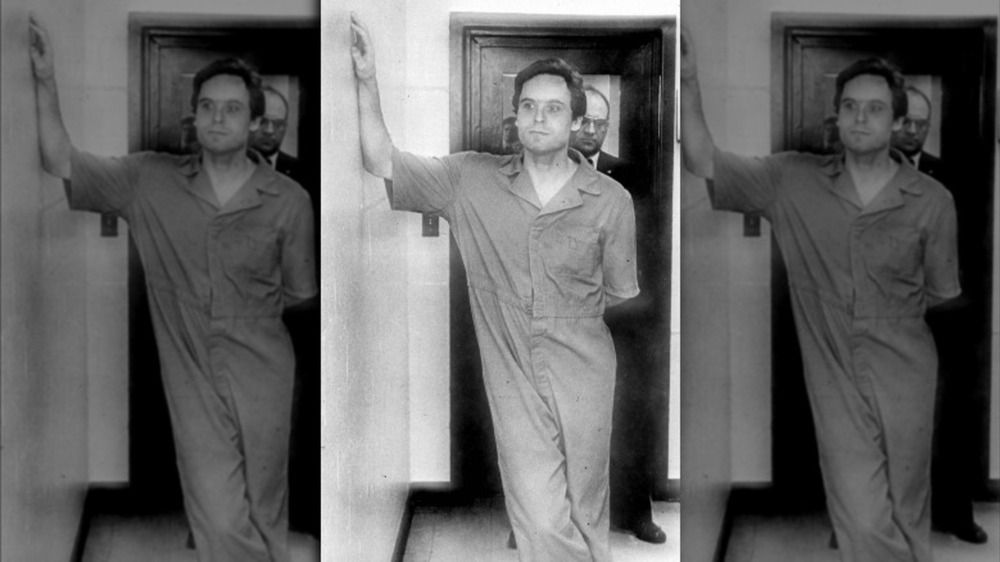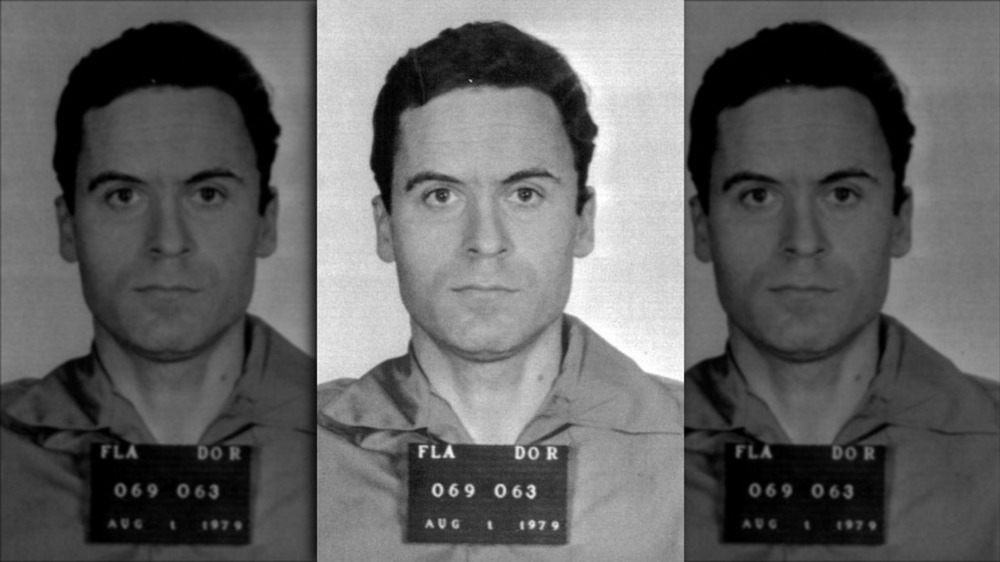Inside Ted Bundy's Escapes From Police Custody
When Ted Bundy was first arrested in a suburb of Salt Lake City on August 16, 1975, authorities were unaware that he had already assaulted and murdered at least a dozen women. Late in the evening, Utah Highway Patrol trooper Bob Hayward spotted Bundy's Volkswagen Beetle idling in front of a house, and became suspicious when the driver immediately took off after spotting the police car. At first, Hayward only pulled Bundy over for questioning, but when he saw a rape kit, including a ski mask, panyhose, rope, and an ice pick, in the back of the car, he brought Bundy into custody, per Teen Vogue. His arrest in Utah, however, was only the beginning of his altercations with authorities. It turned out Bundy wasn't just a terrifying murderer and master of manipulation. He was also a master of escape.
Initially, Bundy was only booked for evading a police officer and possession of burglary tools, and then released. But when Carol DaRonch, a teenager who had narrowly escaped Bundy's clutches the previous year, came forward to identify him in a lineup, Bundy was arrested and charged with attempted criminal assault and aggravated kidnapping, according to ABC News.
Bundy was extradited to a prison in Colorado to stand trial for the murder of Caryn Campbell
In February 1976, Bundy's case finally went to trial. Hoping to avoid all the negative publicity surrounding the trial, he chose to waive his right to a jury. After a five-day deliberation, Bundy was found guilty of the aggravated kidnapping of DaRonch and sentenced to 15 years in prison, according to ThoughtCo. While he was behind bars in Utah, authorities turned up hairs in Bundy's car belonging to Caryn Campbell, a young nurse who had been murdered in February of 1975 in Snowmass, Colorado. Bundy was charged with first-degree murder and extradited to Aspen, Colorado, where he was jailed while awaiting trial for Campbell's murder, as ABC News reports.
Upon arriving in Colorado, Bundy refused a lawyer, saying he would represent himself in the upcoming murder trial. This turned out to be part of a devious trick to gain access to the courthouse library, from which he planned to escape. While he was studying in the law library, located on the second floor of the Pitkin County Courthouse, Bundy was permitted to walk around without shackles or handcuffs.
'Honest to God, I just got sick and tired of being locked up'
On June 7, 1977, Bundy jumped out of the second story window and made a run for it. "The guard went outside for a smoke. The windows are open, and the fresh air is blowing through. And the sky was blue, and I said, 'I'm ready to go,' and walked to the window and jumped out. Honest to god, I just got sick and tired of being locked up," Bundy later told prison psychologist Dr. Al Carlisle (via ABC News). He headed to the mountains, where he hid out in a cabin until deciding to walk back to Aspen and flee the area in a stolen car. He was on the lam for a total of six days, until a deputy spotted the stolen car and picked him up again.
That wasn't the last time Bundy was able to escape from custody. He was brought back to Garfield County Jail in Glenwood Springs, Colorado, where he was imprisoned in a single cell with a light fixture that was not welded property to the ceiling. Plotting another escape, Bundy set to work secretly widening the hole made by the faulty fixture, while losing 35 pounds to make himself small enough to fit through the opening.
Bundy managed to squeeze through a hole in his cell and escape to Florida
By December 30, 1977, Bundy was skinny enough to be able to slip through the hole in the ceiling and escape Garfield County Jail through the air ducts. Shortly after his second escape, he may have been picked up hitchhiking by a local coal miner named Andy Leyba. Driving home from a shift in the very early morning hours of December 31, Leyba recalled spotting a man walking alone in the dark without a coat in the middle of a winter snowstorm. The man then flagged him down for a ride, and, feeling sorry for him, Leyba pulled over, per Summit Daily. "If I don't pick this guy up he's going to freeze," Leyba remembered thinking.
While authorities were never able to confirm that the man Leyba picked up was Bundy, he remains sure he unwittingly played a part in helping the killer escape. "I never picked up another stranger hitchhiker after that," Leyba told Summit Daily.
However he had managed to evade authorities, Bundy was determined not to stick around and make the same mistake he'd made after his first escape. No trace of Bundy was seen again until he turned up in Tallahassee, Florida in January of 1978.
Bundy was apprehended for the final time in Pensacola, Florida
Upon arriving in Florida, likely via a bus by way of Atlanta, Bundy went on a killing spree. As Teen Vogue reports, Bundy broke into a Chi Omega sorority house at Florida State University on January 15, where he proceeded to brutally attack four young women, ultimately killing two of them. Just one month later, Bundy struck again, this time tragically kidnapping and murdering 12-year-old Kimberly Leach.
Bundy was finally apprehended again, this time for good, after an altercation with Pensacola police officer David Lee. Bundy had tried to leave the area in a stolen orange Volkswagen bug, but Officer Lee spotted the vehicle loitering in West Pensacola and became suspicious. Lee did not recognize the serial killer — who had landed on the FBI's 10 Most Wanted Fugitives list just four days earlier — but after running the plates, Lee realized the man behind the wheel was driving a stolen car, according to Paul Simpson's 2017 book The Serial Killer Files. When Lee confronted Bundy, he tripped the officer and attempted to flee on foot. Lee, firing two shots after him, pursued the killer, and finally managed to subdue and handcuff Bundy after the ensuing scuffle. On February 15, 1978, Bundy was put behind bars for the last time.
Bundy was found guilty on three counts of murder and given the death sentence. He was executed by electric chair in Florida on January 24, 1989. His story was told in a 2019 Netflix film.
